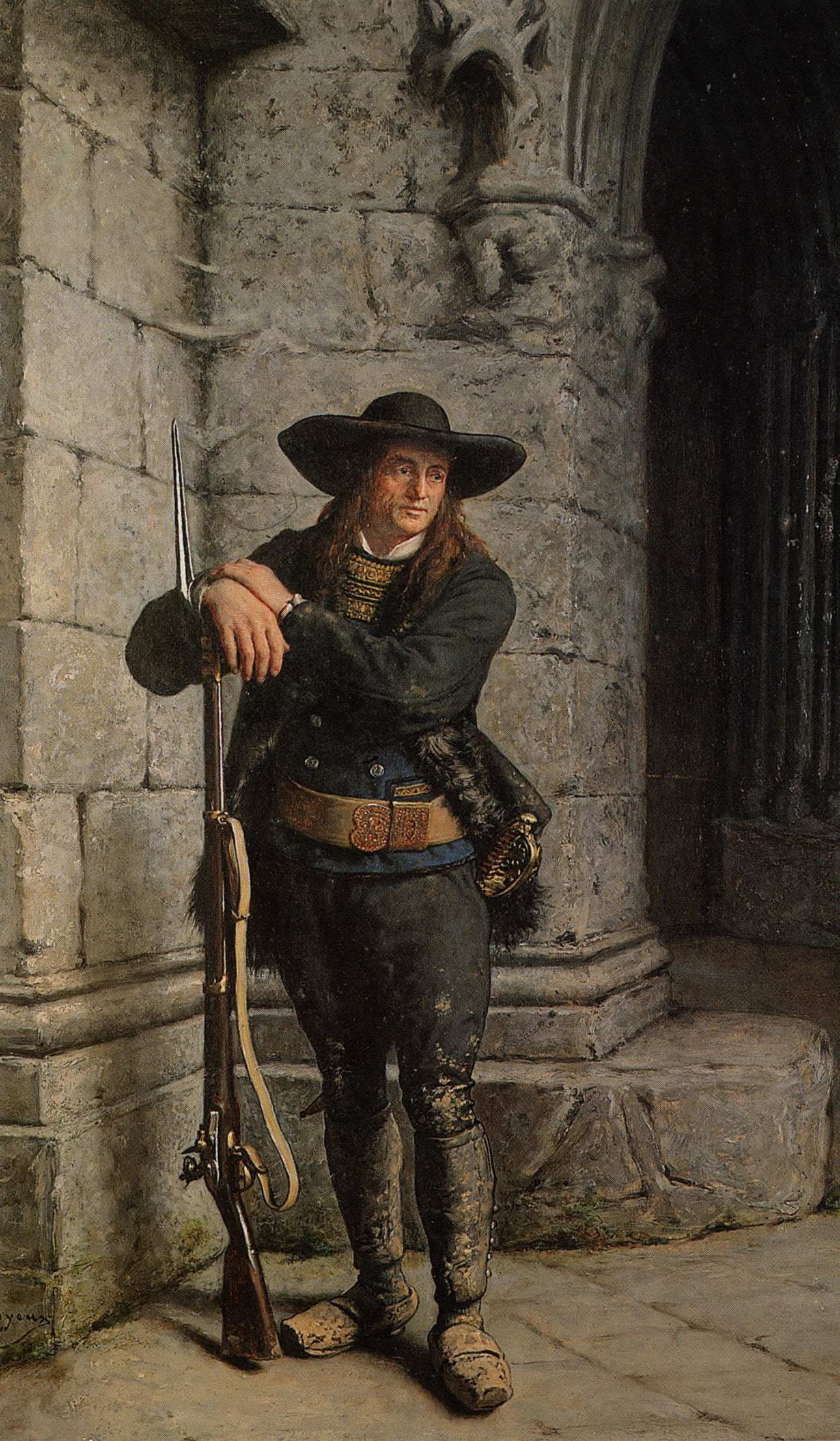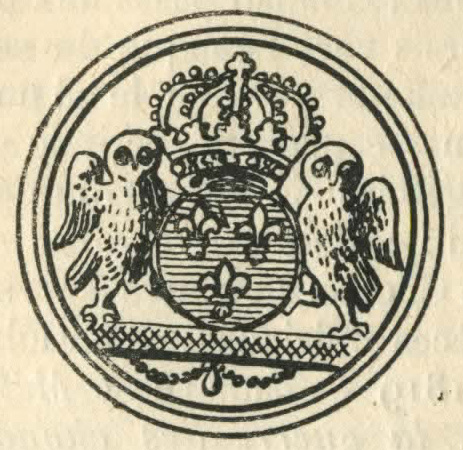Chouan on:
[Wikipedia]
[Google]
[Amazon]
 Chouan (, "the silent one", or "owl") is a French nickname. It was used as a
Chouan (, "the silent one", or "owl") is a French nickname. It was used as a
 The opinion of some historians (including abbot Paulouin) writing on the revolt states that "the insurgents of the
The opinion of some historians (including abbot Paulouin) writing on the revolt states that "the insurgents of the
 Chouan (, "the silent one", or "owl") is a French nickname. It was used as a
Chouan (, "the silent one", or "owl") is a French nickname. It was used as a nom de guerre
A ''nom de guerre'' (, 'war name') is a pseudonym chosen by someone to use when they are involved in a particular activity, especially fighting in a war.
In Ancien régime, ''ancien régime'' Kingdom of France, France it would be adopted by each n ...
by the Chouan brothers, most notably Jean Cottereau, better known as Jean Chouan, who led a major revolt in Bas-Maine against the French Revolution. Participants in this revolt – and to some extent French anti-revolutionary activists in general – came to be known as ''Chouans'', and the revolt itself came to be known as the ''Chouannerie
The Chouannerie (; from the Chouan brothers, two of its leaders) was a House of Bourbon, royalist uprising or counter-revolutionary, counter-revolution in twelve of the western departments of France, ''départements'' of France, particularly in ...
''.
Origin of the word
Jean Cottereau and his brothers all inherited the nickname Chouan from their father, a clog merchant and ''homme honorable'' from Saint-Berthevin in Mayenne, on the border with Brittany. One view is that this nickname originated from his talent for impersonating the cry of theowl
Owls are birds from the order Strigiformes (), which includes over 200 species of mostly solitary and nocturnal birds of prey typified by an upright stance, a large, broad head, binocular vision, binaural hearing, sharp talons, and feathers a ...
(''chouette'' in French), or specifically the tawny owl
The tawny owl (''Strix aluco''), also called the brown owl, is a stocky, medium-sized owl in the family Strigidae. It is commonly found in woodlands across Europe, as well as western Siberia, and has seven recognized subspecies. The tawny owl' ...
, which was called ''chouan'' in old French (French ''chat-huant''), a designation that survived in the western ''langue d'oïl
Langue is a municipality in the Valle Department, Honduras.
The town is located near the border of El Salvador and is a regional Hammock making center. Most of the town is made up of sharecroppers and day laborers. There are usually Mormon mis ...
'' dialect spoken in Mayenne. According to another authority, the only reason the members of the Cottereau family had long borne the surname Chouan was that their grandparent was sad and taciturn by nature, and according to yet another, because they used owl-calls as warning and recognition signals whilst out on smuggling trips. Writing within living memory of the events, Jacques Duchemin des Cépeaux insisted that,
The surname of Chouan was given to Jean Chouan's grandfather because he was by nature taciturn and sad and because, at meetings, he kept himself out of the way in a corner. Since that time, the Cottereau family has maintained this surname. It was in turn given to all men who mustered to fight under the command of Jean Chouan, and finally to other royalists in arms in the western provinces. As for the account that the first Chouans imitated the cry of birds of the night to recognise and call each other, it is a supposition made by those who - not knowing the true explanation - nevertheless wanted to have some explanation to satisfy their curiosity... Maybe some insurgents had this idea which was suggested to them by their nickname. Although it is only some, it is to be noted that the bird formerly dedicated to armed wisdom became a sort of emblem for the bellicose piety of our peasants."One possible reason the name was extended to the royalist troops of Maine, Normandy and Brittany is the riot at Saint-Ouën-des-Toits on 15 August 1792, in which (among others) Jean and René Cottereau participated. There, they signalled to the Laval authorities. Another is that the royalist troops mustered at night using the owl call as a signal.
Spread
Sarthe
Sarthe () is a department of the French region of Pays de la Loire, and the province of Maine, situated in the '' Grand-Ouest'' of the country. It is named after the river Sarthe, which flows from east of Le Mans to just north of Angers. It ha ...
did not receive the nickname Chouans, but took it up of their own accord at the beginning of their resistance career".
The 19th century historians — J.-J. M. Savary, J.-M. Lequinio the author of ''Mémoires d'un Administrateur des Armées Républicaines dans la Vendée'' — differed. Joseph de Puisaye, the best-informed on the topic after having been the Chouannerie's supreme commander, affirmed that the Chouan brothers gave their name to the revolt which they had first organised.
A curious shield of the revolt seems to bear a sort of official use of owls (also the emblem of Minerva
Minerva (; ; ) is the Roman goddess of wisdom, justice, law, victory, and the sponsor of arts, trade, and strategy. She is also a goddess of warfare, though with a focus on strategic warfare, rather than the violence of gods such as Mars. Be ...
) in representing the Chouannerie. It bore the arms of France, ''right'',Three fleurs de lys. supported by two owls, with a double motto, ''IN SAPIENTIA ROBUR'' at the top, ''SIC REFLORESCENT'' at the bottom. It is to be found on some publications emanating from the "Royalist agencies in England", notably on the frontispiece of ''l’Almanac
An almanac (also spelled almanack and almanach) is a regularly published listing of a set of current information about one or multiple subjects. It includes information like weather forecasting, weather forecasts, farmers' sowing, planting dates ...
h Royaliste pour l'année 1795, troisième du règne de Louis XVII
Louis XVII (born Louis Charles, Duke of Normandy; 27 March 1785 – 8 June 1795) was the younger son of King Louis XVI of France and Queen Marie Antoinette. His older brother, Louis Joseph, Dauphin of France, died in June 1789, a little over ...
, à Nantes
Nantes (, ; ; or ; ) is a city in the Loire-Atlantique department of France on the Loire, from the Atlantic Ocean, Atlantic coast. The city is the List of communes in France with over 20,000 inhabitants, sixth largest in France, with a pop ...
(Londres
Londres may refer to:
Locations
* London
London is the Capital city, capital and List of urban areas in the United Kingdom, largest city of both England and the United Kingdom, with a population of in . London metropolitan area, Its wi ...
) et se trouve dans toutes les villes de la Bretagne, de la Normandie, du Poitou
Poitou ( , , ; ; Poitevin: ''Poetou'') was a province of west-central France whose capital city was Poitiers. Both Poitou and Poitiers are named after the Pictones Gallic tribe.
Geography
The main historical cities are Poitiers (historical ...
, du Maine
Maine ( ) is a U.S. state, state in the New England region of the United States, and the northeasternmost state in the Contiguous United States. It borders New Hampshire to the west, the Gulf of Maine to the southeast, and the Provinces and ...
, du Perche
Perche () (French: ''le Perche'') is a former Provinces of France, province of France, known historically for its forests and, for the past two centuries, for the Percheron draft horse, draft horse breed. Until the French Revolution, Perche was ...
, de l' Anjou, etc., et bientôt dans toute la France
France, officially the French Republic, is a country located primarily in Western Europe. Overseas France, Its overseas regions and territories include French Guiana in South America, Saint Pierre and Miquelon in the Atlantic Ocean#North Atlan ...
'' or, in English, "The Royalist Almanac for the year 1795, third year of the reign of Louis XVII, at Nantes (ie London) and found in all the towns of Brittany, Normandy, Poitou, Maine, Perche, Anjou, and soon throughout the whole of France".
See also
* Battle of Redon (1815)Notes and references
Sources
* {{Authority control Surnames * Groups of the French Revolution 1793 establishments in France